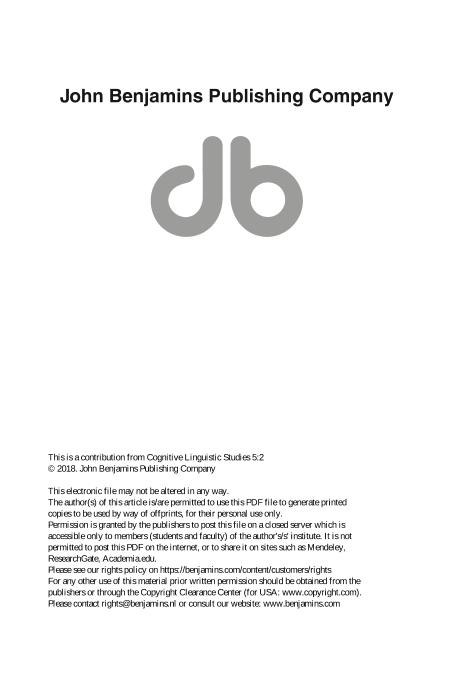Artículo
A cross-linguistic study of metaphors of death
Gatambuki, Gathigia, Moses; Wang, Ruiming; Shen, Manqiong; Tirado, Carlos; Tsaregorodtseva, Oksana; Khatin Zadeh, Omid; Minervino, Ricardo Adrian ; Ramos, Fernando
; Ramos, Fernando
 ; Ramos, Fernando
; Ramos, Fernando
Fecha de publicación:
10/2018
Editorial:
John Benjamins
Revista:
Cognitive Linguistic Studies
ISSN:
2213-8722
e-ISSN:
2213-8730
Idioma:
Inglés
Tipo de recurso:
Artículo publicado
Clasificación temática:
Resumen
The avoidance of directly addressing human mortality indicates fear of death. This fear elicits psychological, social and religious interdictions in language such that people resort to the use of metaphors to avoid confronting death. Under the premise that metaphor is a conceptual mapping from a concrete source to an abstract target domain, this study aims to identify and categorize euphemistic metaphors of death in six languages: Chinese, Farsi, Gĩkũyũ, Russian, Spanish, and Swedish. Those metaphors are interpreted via the Conceptual Metaphor Theory (CMT). In doing so, 40 speakers in each of the languages were asked to complete a short questionnaire. Various metaphors of death were identified in each language and categorized into four conceptual metaphors: DEATH IS A JOURNEY; DEATH IS THE END; DEATH IS A REST; and DEATH IS A SUMMONS. The key finding is that the most common metaphor of death is DEATH IS A JOURNEY. This holds across linguistic groups regardless of gender and age factors. This study also discusses the role of embodied cognition theories in accounting for how metaphors of death are created and their role within cognition in general.
Palabras clave:
DEATH
,
EMBODIMENT
,
METAPHOR
Archivos asociados
Licencia
Identificadores
Colecciones
Articulos(IPEHCS)
Articulos de INSTITUTO PATAGONICO DE ESTUDIOS DE HUMANIDADES Y CIENCIAS SOCIALES
Articulos de INSTITUTO PATAGONICO DE ESTUDIOS DE HUMANIDADES Y CIENCIAS SOCIALES
Citación
Gatambuki, Gathigia, Moses; Wang, Ruiming; Shen, Manqiong; Tirado, Carlos; Tsaregorodtseva, Oksana; et al.; A cross-linguistic study of metaphors of death; John Benjamins; Cognitive Linguistic Studies; 5; 2; 10-2018; 359-375
Compartir
Altmétricas



